Dairy Calf Opportunities, Owl Farm (Waikato)
9 min read
Dairy and beef farmers are breeding and rearing quality dairy calves to go into the beef supply chain. Nearly three-quarters of dairy farmers already use beef genetics to improve the value and performance of calves that are surplus to requirements for their dairy business, and some farmers are adapting their systems and management to further increase the value of their surplus calves. Find out more about the dairy calf strategies at Owl Farm.
Owl Farm is a 130-hectare dairy farm between the St Peter’s School Cambridge campus and the Waikato River. All calves are valued and cared for at Owl Farm according to their principle of increased 'purpose of life' – to ensure all calves born in the Owl Farm herd have a purposeful life. Owl Farm is a demonstration farm and has regular updates on their website.
Farm size (effective)
130 ha
Herd size
350
Location
Cambridge, Waikato
Stocking rate
2.7 cows/ha plus all calves on farm
Annual average milk solids production kg MS/cow
420
Annual average milk solids production kg MS/ha
1150
Replacement rate
21%
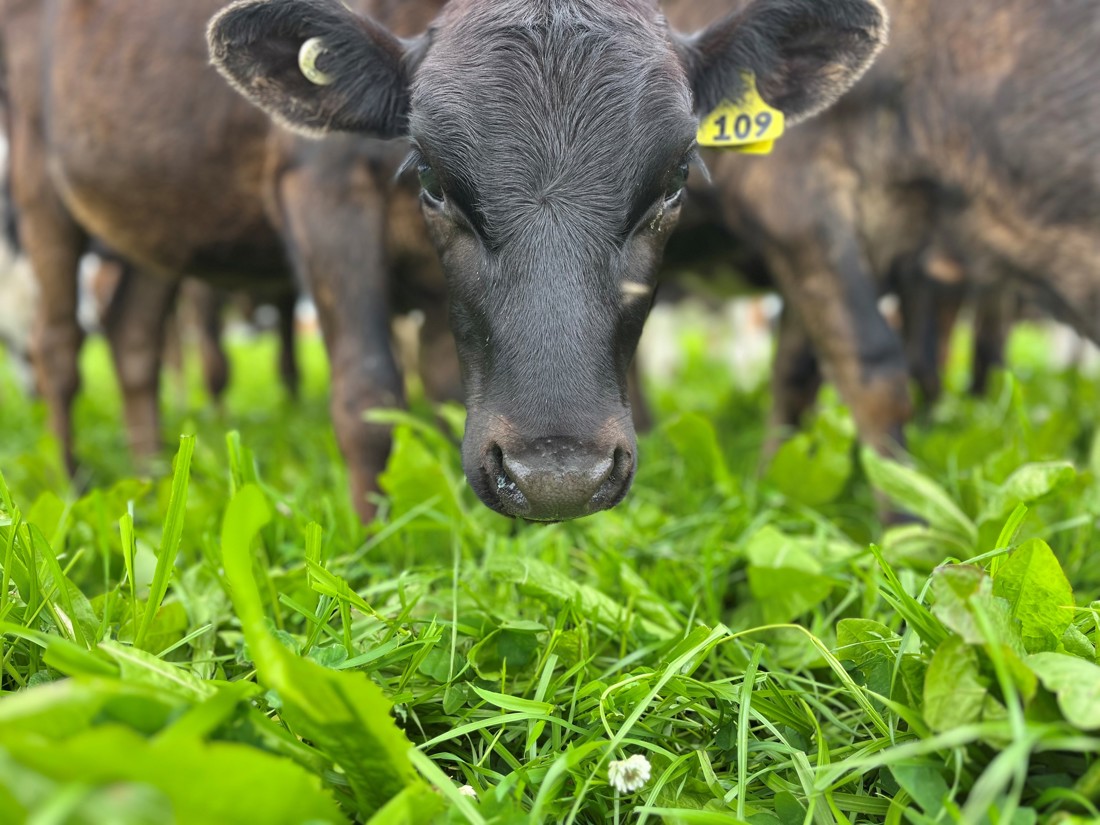
Photo credit: Owl Farm
When considering a mating plan, you aim to move in one direction, there are always some gains and then some trade-offs, so you have to keep evolving for each new generation of calves every year.
Jo Sheridan
Demonstration Manager
In 2018, Owl Farm made the decision to change their mating programme to achieve their goal to increase the number of calves with a ‘purpose of life’. Jo Sheridan, the Demonstration Manager from Owl Farm, has shared some of what they’ve learnt over the past couple of years.
In her recent catch-up with DairyNZ, Jo said: “You can’t be afraid to take two steps forward and one step backwards, if you have the best intentions when trying to enter an underdeveloped market. You can grow a quality calf, but the process needs to be sustainable and profitable.”
“We have got time on our side to try and look for solutions as markets are changing and we have had to pivot and change our mating programme,” Jo said.
It is really encouraging to see what other farmers are doing and sharing our own journey on what has or has not worked.
Jo Sheridan
Demonstration Manager
“The key is to try new things and not to be discouraged”. Although Owl Farm has made a loss on some beef bulls in previous years, it has been balanced by receiving a premium for heifer replacements.
It is critical for Owl Farm to stay up to date with current research as genetics selections are moving fast. Owl Farm wants the best straw for the right cow, that suits their business plan, every year.
“To be a viable business and demonstration farm, any change in mating programmes must increase our social licence standards, while ensuring we can recover our costs and that the business changes will be sustainable,” Jo said.
See how Owl Farm have been tracking over the years in the calf summary provided below.
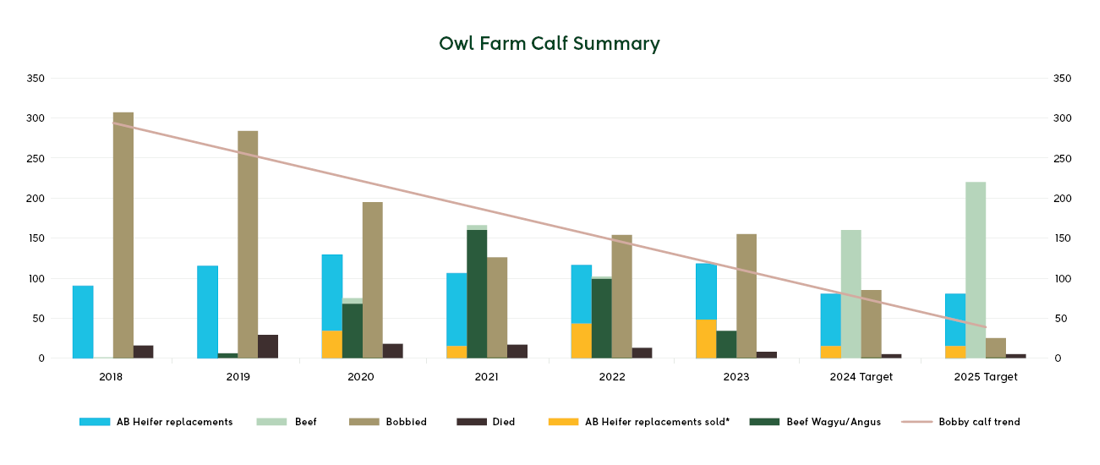
The details in this graph have been provided by Owl Farm.
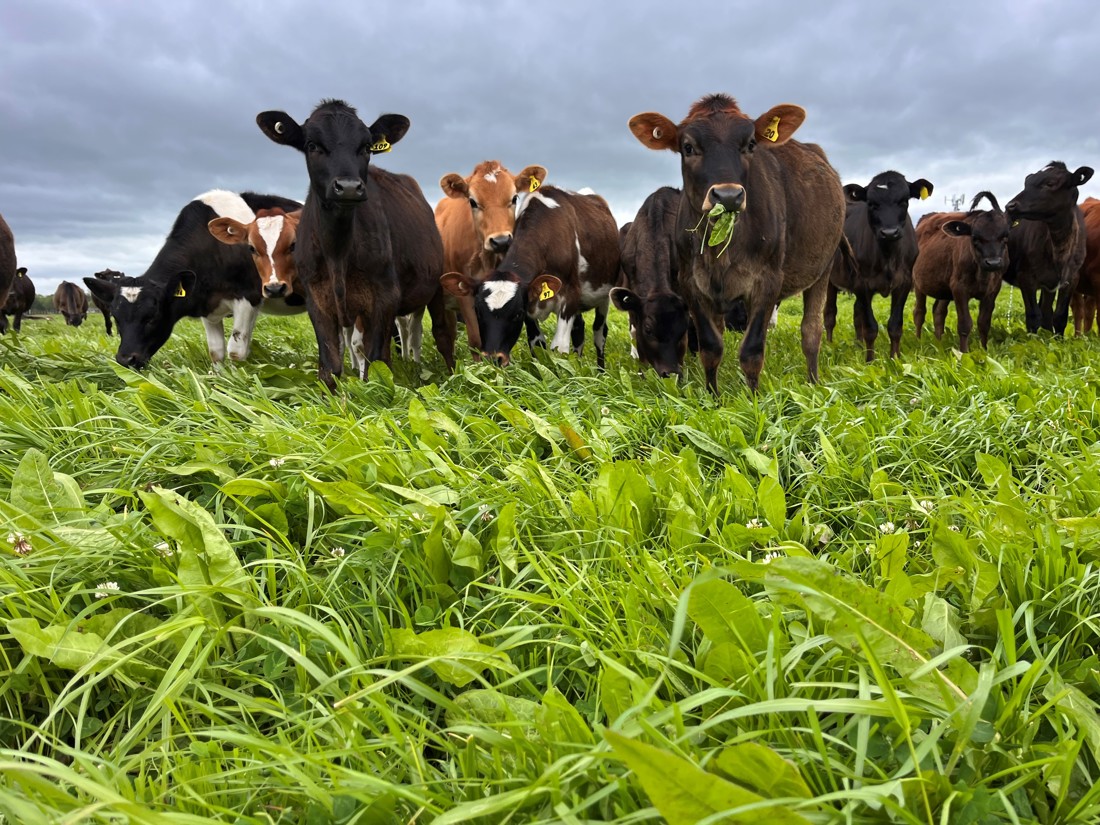
Photo credit: Owl Farm
In 2019, Owl Farm launched a new breeding strategy, which increased the use of sexed semen for replacement heifers and contracted Wagyu beef semen. Sexed semen was used over the highest BW cows to ensure the herd remained in the top five percent nationally. Alongside a synchrony programme, the breeding strategy increased purposeful lives of calves from 34% in 2018 to 70% in 2021.
“Our most successful year to date was 2021, selling Wagyu calves and heifer replacement calves. But since then, we have had to make some changes and we are hoping to get back to 74% target for 2024 by utilising more beef on dairy breeding, which is similar to the 2021 year and will improve our calving rate and early season production with less impact on profit.”
Wagyu calves command a consistently higher price that can be built into the farm budget, unlike the variability of dairy beef at the sale yards. For the first two years, Owl Farm contracted Wagyu beef semen. However, the longer gestation length, lack of markings, and the Wagyu company looking to have fewer collection points and larger suppliers, resulted in the mutual decision to stop the Wagyu production on Owl Farm and to consider some other options.
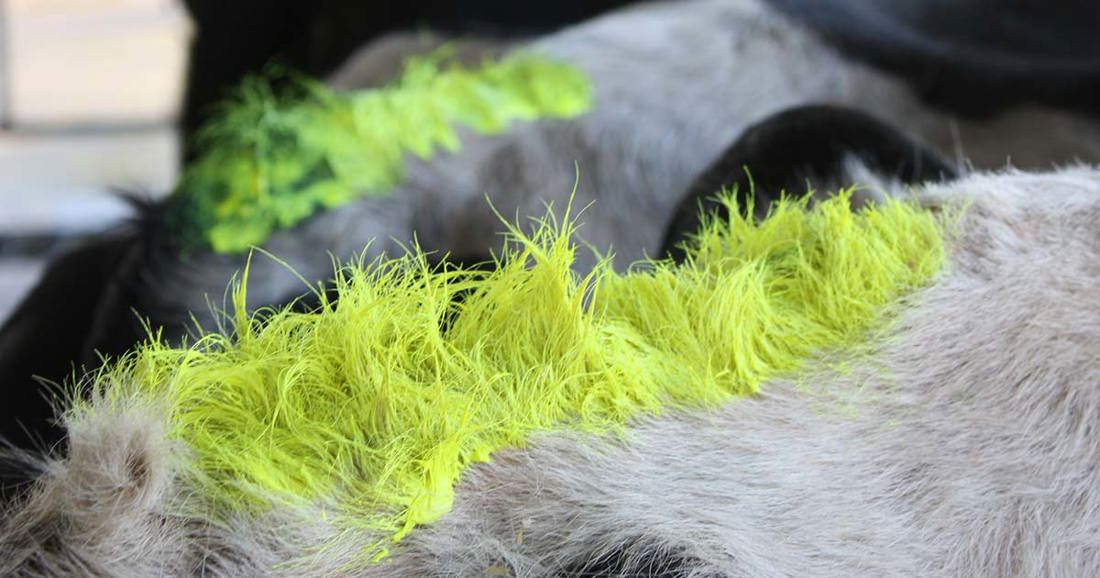
In 2023, Owl Farm made some changes to their mating programme. Owl Farm used dairy-bred sexed semen and Charolais for the first three weeks of the mating season. From four weeks to nine weeks, they used Charolais, Profit Maker and Angus and finished with short gestation length (SGL) Angus and dairy (six and 10-days shorter gestation, respectively).
Previously, Owl Farm sold around 40 surplus high-BW heifer calves, but now they are only aiming to produce enough heifers to cover their own replacement needs. The sale calves were costing $250 to rear from birth to weaning, and needed a DNA genomic full parentage test, which takes five weeks. “We are only just recouping the costs, so this was no longer a viable business option.”
As a result, Owl Farm changed their mating programme. They continue using sexed semen to produce their replacement heifers. Owl Farm is keen to make the most of the opportunities, such as high BW heifer replacements, but are making changes as they discover what mating programme is the best fit for their farm system.
Owl Farm uses one nominated Charolais sire for his high-performing traits. In general, Charolais are a great decision, they are nicely marked calves that have great growth rates and calving ease. “It is important we avoid within-breed sire variation, which is why we have selected one specific sire”, says Jo.
For all Charolais-sired calves Owl Farm are looking to have one buyer. These calves will be high-genetic merit early-to-market calves, and Jo is aiming to get a premium for these calves. These calves are easily identifiable and will stand out against the sexed semen dairy-sired calves.
Because of the increased calving spread and (obtaining top three percent breeding worth nationally), Owl Farm decided not to do the heifer synchrony programme in the 2023 mating season. Jo says, “We have well-grown heifers, but we need them to be calving as early as possible in the season. This year we will use the Jersey bull for the heifers, as the priority is to get them in calf early. Owl Farm will continue to look for another solution in the meantime.”
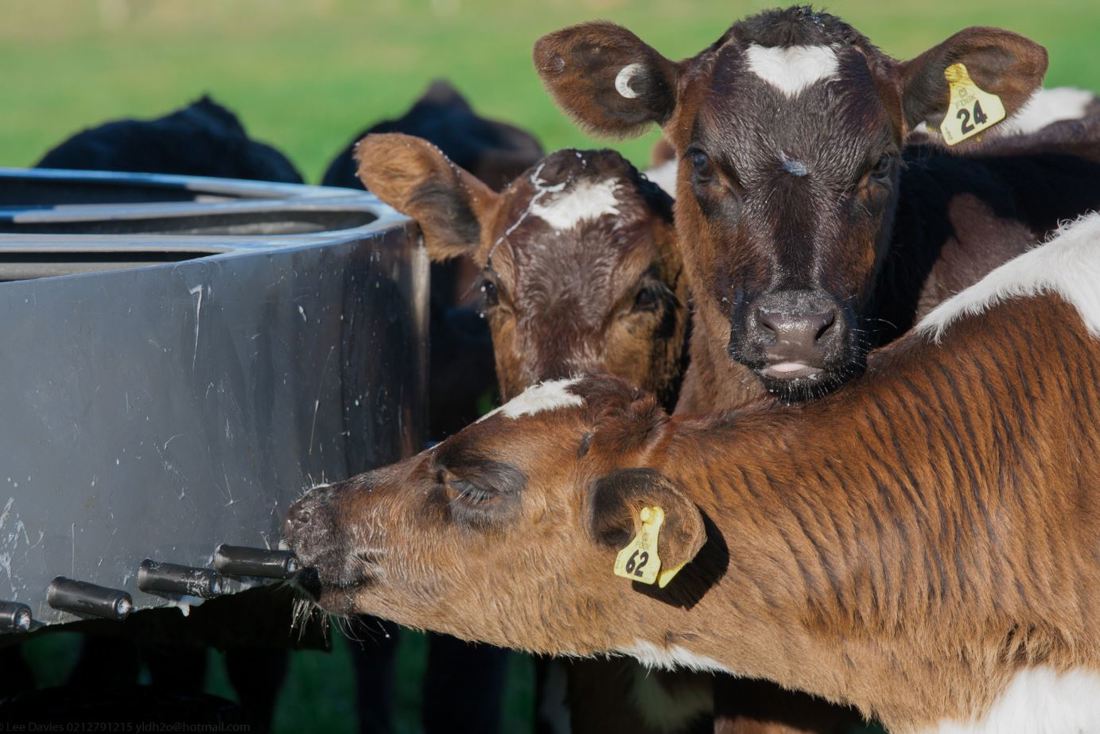
Dairy heifers stay on farm till the 1st of May and then go off farm to contract graziers. Beef calves are sold at four days old. Calves are fed twice a day on whole milk for three weeks before transitioning to once a day and milk replacer.
Owl Farm will partner with one buyer for the first four weeks for the calves sired by Charolais, to be picked up at four days old. This should be the bulk of the calves. The remaining calves will be sold at 4-10 days old, or at weaning to our local community. Owl Farm will stay connected with these buyers and build a community to support rearing success. Jo says, “This year we have the opportunity to take a mob of 30 calves through their first summer to add value to student learning and share our journey.
Owl Farm has purchased two calf weigh stations. The weigh stations will allow Owl Farm to collect regular growth rate data and separate the calves by category and move them straight into their corresponding pens.
Jo is excited to see how they keep progressing on this journey. “We are looking for new ways to build our supply chain network with local calf rearers and beef finishers.”

